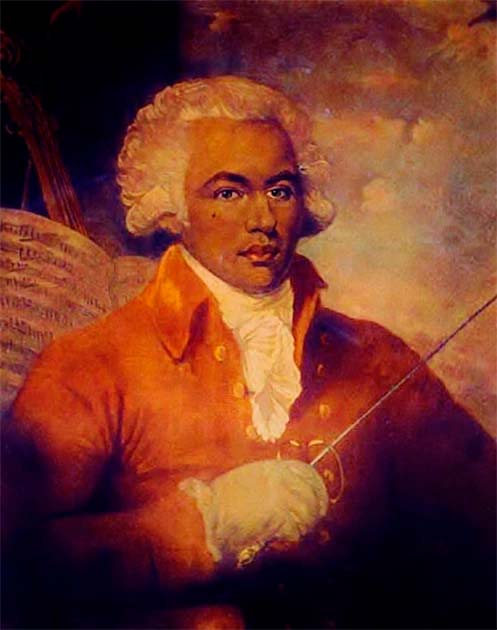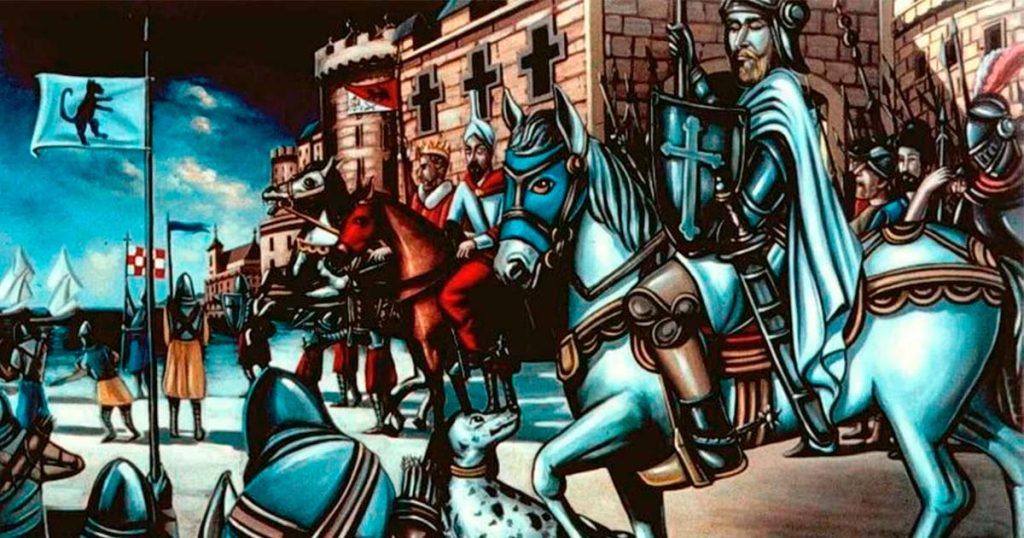Expertise with a blade has long been a mark of a truly skilled combatant. Those who were handy with a sword would command respect and fear wherever they went, and such men (and it is almost always men) were often chosen as champions, fighting duels on behalf of their social (and financial) betters.
Such men were also often self-made, skill with a sword being something entirely independent of rank and status. To be a great swordsman was therefore to be demonstrably gifted, and while it is no surprise that the ranks of the nobility often strove to excellence, the true masters came from all walks of life.
Here are six of the finest sword fighters in history.
1. Donald McBane
Donald McBane, a Scotsman who fought in the late 17th and early 18th centuries, is widely considered to be one of the most prolific duelists of all time. Born in Inverness in 1664, he ran away from home in his early twenties and enlisted with the Duke of Marlborough: Donald was to become a career soldier.
However for all his fighting, he was never raised to the rank of officer, that achievement being almost exclusively the reserve of gentlemen. Instead he would concentrate of perfecting his art of single combat, and is believed to have fought over a hundred duels in his lifetime.
Donald also educated himself during his lifetime, publishing a book on fencing in 1728 entitled The Expert Sword-Man’s Companion. His book, drawn from life and filled with anecdotes as to his fencing and dueling experiences as well as life under the great Duke of Marlborough, is essential reading to all with an interest in swordsmanship.
2. Joseph Bologne, Chevalier de St Georges
Joseph Bologne was something of a genius. Born in Guadeloupe in 1745, his father was a plantation owner named Georges de Bologne Saint-Georges and his mother a Senegalese slave named Nanon. His father ensured he received an education, and that was all the start he needed.
- Six Famous Swords from History which Still Survive
- Japan’s Perfect Sword: The Legend of the Honjo Masamune
His two great loves were fencing and music, both of which he learned in France after he was taken there at the age of seven. However he would use what he had learned at court on the side of the Republic during the French Revolution, where he commanded a legion of hand to hand combatants, distinguishing himself with a blade during the bloody overthrow of the House of Bourbon.

Today he is best remembered as the first person of color to receive widespread fame for his musical composition. In addition to his published music, he became concertmaster and conductor of the Paris Symphonic Institution; he also published plays, operas and became the darling of the Paris social scene.
3. Minamoto Yoshitsune
Minamoto Yoshitsune was a military commander of the Minamoto clan in 12th century Japan, and was famed for his ability with a sword. He is considered perhaps the finest samurai in the entire history of Japan.
Born just before the Heiji rebellion in which both his father and two oldest brothers were killed, he survived by fleeing the advancing soldiers with his mother and eventually finding sanctuary in the Kurama Temple near Kyoto. However his fame began to grow when he defeated the famed warrior monk Benkei in a duel: Benkei would serve Minamoto for the rest of his life.
Minamoto went on to lead to armies of his clan against their great rivals, the Taira. In what became known as the Genpei war, Yoshitsune and his surviving brother Noriyori would defeat the Taira in battle after battle, eventually emerging victorious in 1185.
4. Fiore dei Liberi
Fiore Furlano de Cividale d’Austria, delli Liberi da Premariacco, was a 14th century Italian knight and a skilled duelist. His manual on fencing styles and combat, called The Flower of Battle, is the earliest surviving Italian work on swordfighting, and remains a relevant tract on combat with a blade to this day.
His background is obscure but he was probably descended from German lower nobility, and he recorded that he began his training at a young age. He would go on to study with countless masters from both Germany and Italy in the Holy Roman Empire, noting also that he encountered many who claimed to prowess but lacked any real ability, calling them “false” masters.
- The Arslantepe Mound of Turkey: The First Swords
- Julie D’Aubigny: Iconic French Pre-Revolutionary Bisexual Opera Star
Liberi would make a living by training mercenary officers in dueling and many notable nobles of the armies of the Holy Roman Empire trained under him. His exhaustive work covers multiple forms of combat, multiple weapon selections and how to fight against various opponents, including those on horseback.
5. Johannes Liechtenauer
Another German fencing master from the 14th century, Liechtenauer has similarly obscure origins but seems to haver been a near contemporary of Liberi, arriving on the scene only a little earlier. He is said to have been well travelled, learning many different combat techniques, but as to where he went and what those were, we cannot entirely say.
A fearsome fighter, his techniques both learned and developed by him were remembered by his students through a mnemonic poem which he called the Zettel, or “schedule”. This took the form of a rapid-fire list of moves, which the student was already expected to know, which could be executed in quick succession to overcome an opponent.
Interestingly, the oldest copies of his manual also refers to something called the “Society of Liechtenauer”. While it is uncertain what this is, it seems likely that this was an otherwise-unknown fencing school of masters who followed his teachings. Another possibility is that the society is in memoriam to his students who had died.
6. El Cid
Rodrigo Díaz de Vivar, better known as El Cid, is a legendary figure for many reasons. The hero of Spain against the Moors, he was a key general and prince during the period known as the Reconquista when Islam from driven from Iberia.

El Cid was a famed fighter, loved by his men for leading from the front and always in the thick of the fighting. His prowess with the blade was well known and the Moors came to fear him for his fierce fighting style and seeming invulnerability.
El Cid would meet his end in battle at the siege of Valencia in 1099, dying from injuries received in the fighting. Legend says that his widow Jimena strapped his corpse upright in the saddle of his horse so that he could ride out at the head of his men the next day: the Moorish army, seeing El Cid return from certain death, panicked and broke.
Top Image: Excerpt from Fiore dei Liberi’s seminal manual on swordfighting he called The Flower of Battle. Source: Fiore dei Liberi / Public Domain.
By Joseph Green